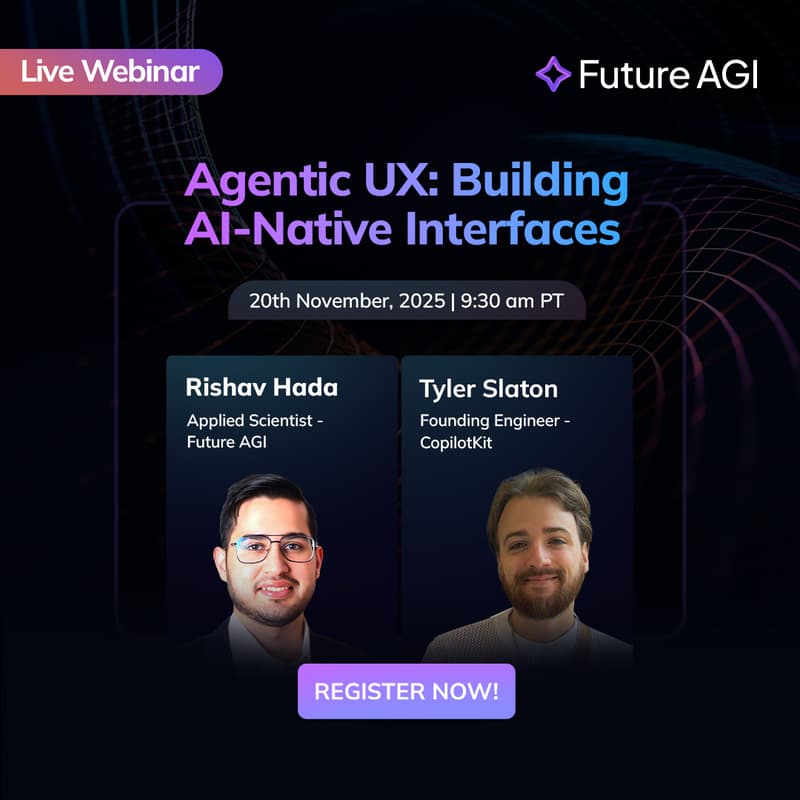

Agentic UX: Building AI-Native Interfaces
🎯 Overview
AI agents are reshaping how users interact with software. This talk explores Agentic UX through AG-UI—an open protocol that standardizes agent-to-user interactions, enabling intuitive, real-time, and collaborative AI experiences.
As AI agents move from isolated tools into everyday applications, traditional UI patterns fall short. "Agentic UX" reframes the interface around continuous, real-time collaboration between humans and AI.
🚀 What You'll Learn
Join us to explore lessons from building AG-UI, an open, event-based protocol that standardizes agent-to-user communication.
Key Takeaways:
How Agentic UX differs from conventional design paradigms
The AG-UI event model: streaming messages, tool calls, and shared state
Patterns for building intuitive, AI-native interfaces
Vendor-neutral messaging that enables interoperability across frameworks (LangGraph, CrewAI, Mastra)
Real-world examples of AG-UI powering multi-agent, human-in-the-loop workflows
You'll leave with: A clear mental model for designing AI-first user experiences, practical integration guidelines, and insights into how standardized protocols are accelerating the agentic web.
🎤 Speaker
Tyler Slaton
Delivery Lead & Founding Engineer, CopilotKit
Tyler is a through-and-through open-source software developer at CopilotKit, where he leads the engineering team. Prior to CopilotKit, he worked at major open-source organizations including Oracle and Red Hat within the distributed computing ecosystem.
👥 Moderated By
Rishav Hada
About Future AGI
Future AGI is a San Francisco-based advanced AI Engineering & optimization platform designed to streamline experimentation, evaluation, optimization and real-time observability. Traditional AI tools often rely on guesswork due to gaps in data generation, error analysis, and feedback loops. Future AGI eliminates this uncertainty by automating the data layer with multi-modal evaluations, agent optimisations, observability, and synthetic data tools, cutting AI development time by up to 95%. By removing manual overhead, it brings software engineering rigour to AI, enabling teams to build high-performing, trustworthy systems faster.
🌐 Follow us on LinkedIn to get the latest updates on events and new launches.